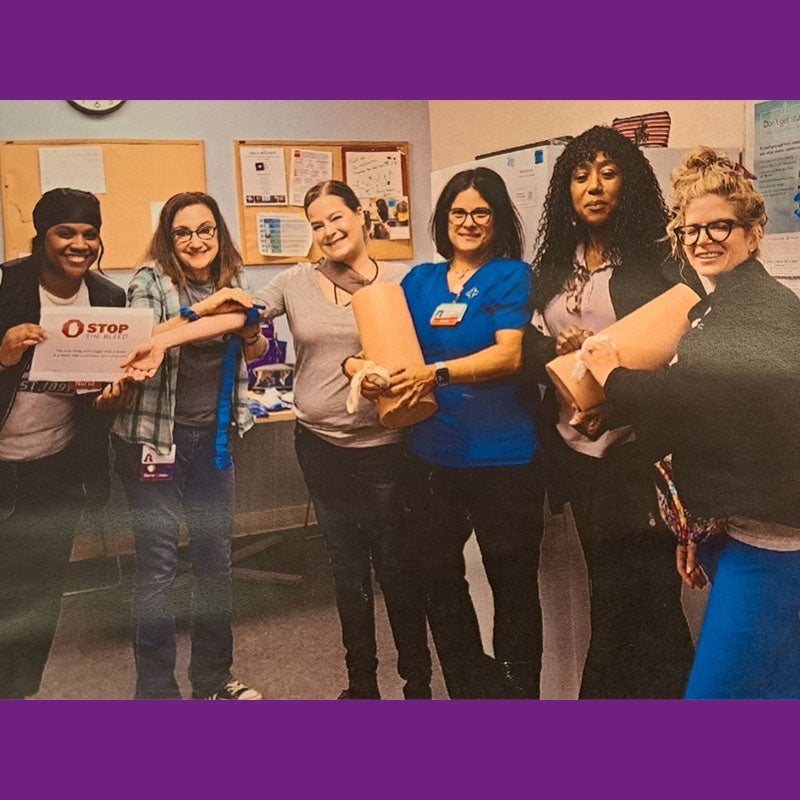As surgical nurses, we know that if a patient is bleeding profusely, we apply pressure and hit the rapid response button, ensuring help will be there in seconds.

7-7 nurses: (L to R) Camille Lawson, LPN, Tracy Gordon Fox, RN, Julia Stavola, LPN, Michelle Koops, RN, Denise Anderson, unit secretary, and Lisa Pickman, RN.
But would we know what to do if someone was bleeding out in the community? If you were in the military, EMS, or have worked in an emergency room, the answer is certainly yes. But many of us who don’t work in those areas may not know how to pack a bleeding wound or apply a tourniquet.
That is rapidly changing thanks to a national program called STOP THE BLEED, which will soon be taught to the staff on the trauma surgery floor by 7-7 nurses who have been trained as instructors in the program. STOP THE BLEED was developed by an emergency room physician in Denver, Colorado who believed that such lifesaving skills on bleeding control could be taught to anyone in the community – similar to how CPR education has been widely conveyed. The national campaign for STOP THE BLEED began in 2015 as a joint effort led by the American College of Surgeons Committee on Trauma collaborating with EMS groups. The need for the program was also influenced by the Sandy Hook school shooting, which took the lives of 20 first graders and six educators, after which, Lenworth M. Jacobs, Jr., M.D., a Hartford trauma surgeon who chaired the Connecticut State Committee on Trauma, convened a panel of national experts to evaluate the response to such mass casualties.
Led by our own David Shapiro, M.D., one of the leading advocates for STOP THE BLEED, Saint Francis Hospital has taught the lifesaving skill to thousands in the community in more than 200 different groups, ranging from high school students to senior citizens. Trainings have even been done at Hartford Yard Goats games, with another scheduled to take place on July 11 at the stadium.
Since the program has only a few props and easy instructions, it can be taught anywhere. Using wounds on rubber “arms,” participants are taught how to pack a wound, apply pressure, and put on a tourniquet. These are lifesaving skills that can be used anywhere, anytime, and are proven to save lives when every minute counts.
“STOP THE BLEED is so important because it empowers bystanders to become immediate responders, prevents delay in care, and makes sure the public has access to supplies in bleeding emergencies,” said Dr. Shapiro.
Written by Tracy Gordon Fox, RN, 7-7. Submitted by Ann Allen, Nursing Professional Development Specialist, Saint Francis Hospital.
Have a story you want to share? Submit your story at TrinityHealthOfNE.org/YourStories.
